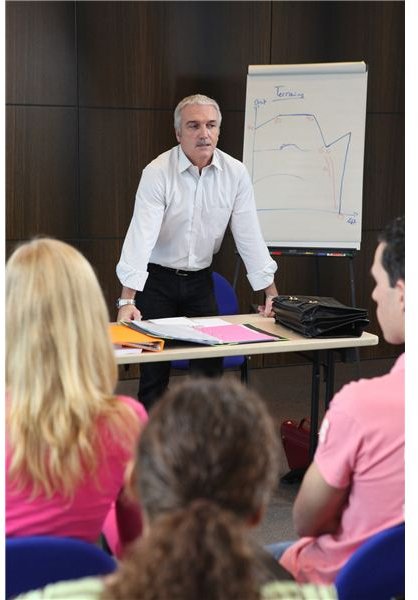Tips for Teachers on Creating a Personal Development Plan
Good teachers know students aren’t created in a factory. They’re not spit out of a machine onto a conveyor belt, the next one exactly like the last. Students have unique personalities and, as a result, individual learning needs and styles.
The same idea applies to teachers. But all too often, they get lumped into one-size-fits-all objectives and assessments that don’t take into account each teacher’s strengths, weaknesses, and goals.
Personal development plans allow you to take control of your own goals by providing you an outlet to set, track, and manage them.
Why You Need One
Unless you believe you have perfected the craft of teaching, there’s always room for improvement. A personalized plan is the best way to help you establish and manage your goals. Here are three reasons you should start on your development plan now:
1. They’re inexpensive and data-driven. Personal development plans can help you focus your attention on making changes based on facts, not perceptions. And they can do this without breaking the bank.
2. They increase your chances of accomplishing your goals. Research shows that writing down your goals makes you significantly more likely to accomplish them. In fact, best-selling author and leadership expert Michael Hyatt says that writing down your goals will, in part, clarify what you want, motivate you to take action, and help you overcome obstacles.
3. They help you make your goals a priority. Humans are inherently bad at accomplishing goals when they’re not tracked and measured. Among lesson plans, grading, and other work and life commitments, it’s easy to let your goals slide if you’re not actively monitoring them.
How to Create Your Plan

Once you’ve decided you need a personal development plan, here are seven tips to help you develop one and stick to it:
1. Reflect on the past. Start by reflecting on your personal and professional practices, strengths, and weaknesses. What do you do on a regular basis? What seems to be working? What are your go-to teaching practices that always work for your students? What areas of your teaching do you feel, if strengthened, would support your students’ growth? Think about times when you grew in your teaching practice, and reflect on how you learn best. Is it working side-by-side with a colleague? Reading a case study? Listening to a webinar and trying those techniques out on your own?
2. Study the facts. Use recent qualitative and quantitative data to see if the facts back up your beliefs. Discard any belief that’s not backed up by concrete data.
3. Focus on core ideas. Instead of trying to tackle everything at once, focus on two or three ideas that you think will help you improve based on your data. How can you leverage your strengths to help you work on your weaknesses? Your selection might be based on what you think is achievable. Larger goals will require significant effort throughout the year. One or two smaller goals can be more easily accomplished and provide a motivation boost to help you tackle your grander goals.
A second approach examines how teaching goals can support one another. Consider clustering goals like maximizing instructional time through clear transitions, delivering clear instructions, and empowering student ownership of routines — all of which complement one another. When achieved, these clustered goals have a significant impact on the classroom climate.
4. Set and measure your goals. For each idea, write down a single goal that begins with an action word, and include a deadline. Determine how you can make your goals SMART: specific, measurable, attainable, relevant, and time-bound.
It’s also critical that you know how you’ll measure your progress. How can you analyze students’ behaviors and progress to indicate that you’ve achieved your instructional goals? If your goal is to build small group discussions into more daily lessons, then how will you measure that specific goal? If you outline and define the necessary data before you begin collecting it, you’re more likely to monitor and evaluate your progress along the way.

5. Decide what you want to gain. Do you want to read more about a specific topic or develop a new skill? How will you implement what you’ve learned? Set achievable milestones, rather than one immeasurable goal, and monitor your success to help you stay on track.
6. Share your goals. When you develop your goals, share them with a close friend or colleague. In fact, the more friends you share your goals with, the more likely you are to achieve them. Tell your “goal buddies” why your goals are important to you. Share your deadlines to hold yourself accountable. Ask your colleagues to provide feedback to help you stay focused.
7. Reassess your goals. After a few weeks, reassess your goals and progress. Have you achieved them? If so, reward yourself, and move on to another goal. If not, reflect on what worked and what didn’t, and decide whether those goals are right for you.
The best way to ensure lifelong learning is to set specific, achievable goals. But long-term growth can only be achieved through tracking those goals every day and ensuring they’re right for you.
Don’t rely solely on cookie-cutter plans and assessments. Set your own goals and break away from the factory line.
About the Author: Jason Lange is the CEO and co-founder of BloomBoard, a company dedicated to bettering the K-12 education space by providing a marketplace for personalizing educator development. BloomBoard uses the data collected from free observational and evaluation tools to create individualized learning plans and recommendations for teacher growth.
